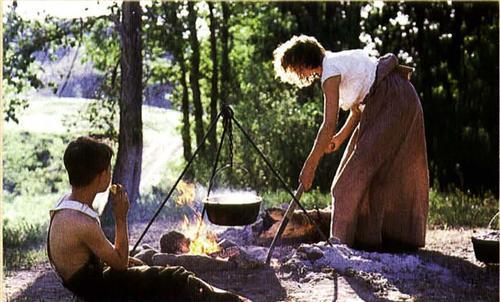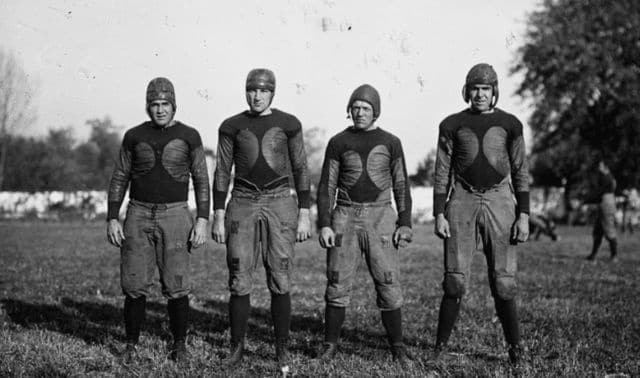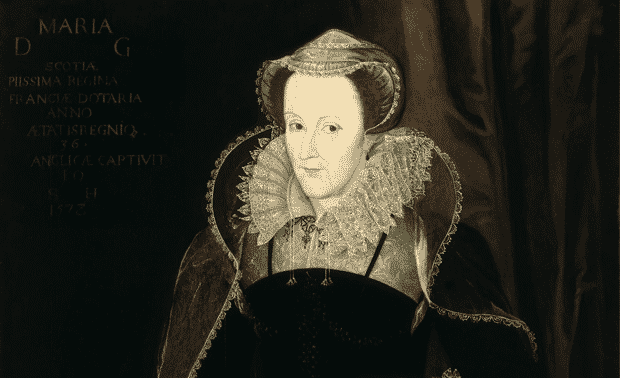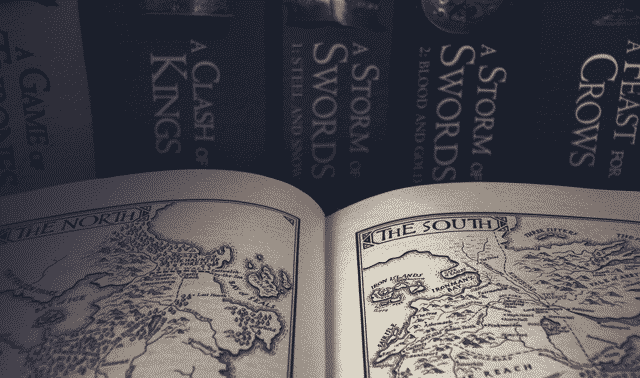Sign up for the Family Tree Newsletter Plus, you’ll receive our 10 Essential Genealogy Research Forms PDF as a special thank you!
Get Your Free Genealogy Forms
"*" indicates required fields
Adrienne Clune imagined life on the late 19th-century Montana frontier as romantic, quiet and slow-paced. She thought of her grandmother’s uncle, P.J. Brophy, who left Ireland in 1876 and a few years later started a grocery store in Butte, Mont. Sure, life on the frontier was tough for him in the beginning, but he became quite successful and well-liked in the booming mining town. When she applied last year to participate in the new PBS reality series “Frontier House,” Clune thought that five months on a re-created 1883 homestead would allow her plenty of time for quilting, sewing and bonding with her husband and three children.
Once she began her life as a “homesteader’s wife,” however, those romantic ideas were plowed under by reality. Milking cows, churning butter, cooking three meals a day on a wood stove, laundering clothes with a washboard — the time-consuming, monotonous chores of everyday survival didn’t leave much time for quilting or anything else. “It was an endless work day, from sunup to sundown,” Clune says after returning to life as a stay-at-home mom in her comfortable California home. “For women, particularly mothers, [frontier life] was brutally tough, full of hardship. There was so little time to do the things I’d like to do.”
Clune was one of 13 people from three families who accepted the “Frontier House” challenge: Take over a 160-acre homestead and live a historically accurate 1883 lifestyle from June to October 2001. All the while, a television crew from Thirteen/WNET New York caught every move on tape, including “video diaries” that captured each participant’s individual experience along the way. There was no “tribal council” where participants voted each other off the show; instead, the three families occasionally came together to share common problems and solutions, such as raising livestock. No one won $1 million at the end; the only prize for participants was the richness of the experience.
“I’ll never be the same person I was before,” says Karen Glenn, another “Frontier House” participant. “I have a deeper understanding of what’s essential: the family.” Glenn, a school nurse from Tennessee, decided to try out for the show as a tribute to her father, who grew up in a log cabin in the Appalachian Mountains of Maryland and died several years ago at the age of 81. “I wanted my children to see and feel and understand their grandparents’ and great-grandparents’ lives,” she says.
So how did they do it? The producers couldn’t just plop three 21st-century families into the 1883 Montana wilderness and say “Go for it!” Instead, they took the approach of a previous popular PBS series, “The 1900 House,” in which a modern British family spent three months living as Victorians. That show relied on a number of experts to re-create the life of a middle-class family in 1900 London as accurately as possible. The “Frontier House” producers hired a domestic skills consultant, an animal handler, two historical consultants and a building specialist, all with expertise on the time period and region of 1880s Montana.
Linda Peavy and Ursula Smith, the show’s historical consultants, wondered how accurate the experience would end up being for participants. After meeting with the production crew, however, they realized “they were serious,” Smith says. “This was not ‘survivor.'” Peavy and Smith, who co-authored several history books on women and the West, came up with probable “scenarios” for why each family might have come to the frontier in 1883. They also decided what personal items the families would have brought in a trunk, which the family members got to open at the end of a “boot camp” of training for frontier life. During the two-week period, the families learned how to build a cabin, start a fire in a wood stove, milk a cow, plow a field and many other skills they would need on their own homesteads.
In the end, all three families survived. They took on the challenge of their ancestors and succeeded. You can witness their pain and progress when the show begins airing in late April, and get an idea of what your pioneer relatives might have gone through. “Frontier House” consists of six one-hour episodes, with two episodes airing per night on April 29, 30 and May 1, from 9 to 11 p.m. (ET) on PBS (check local listings). For lots of background information and behind-the-scenes scoop, check out the Web site companion to the show at <www.pbs.org/wnet/frontierhouse>. “You’ll feel dirty and tired, you’ll feel their triumphs and joy,” Smith says. “You’ll feel the homesteader experience, which you’ve read about but never seen actually experienced.”
Land, Ho!
Most of your frontier ancestors headed west to obtain land made available by the Homestead Act of 1862. The act allowed a person to file for a quarter-section of free land (160 acres), as long as certain requirements were met at the end of a five-year period. This included building a house, digging a well and plowing 10 acres.
The Homestead Act attracted a high number of emigrants. Jameson says the frontier had a higher population of foreign-born than New York City — at times as much as 25 to 29 percent. The frontier became home to Germans from Russia, Scandinavians, Greeks, Mexicans, Jews and even Japanese who settled in western Nebraska to work on the sugar beet crop.
Homestead land records can be searched online at the Bureau of Land Management’s General Land Office site <www.glorecords.blm.gov>. The database contains records of land transferred from the federal government between 1820 and 1908. Search the land patents by choosing the state your ancestor homesteaded in, and then filling in at least a surname to begin the search. Land records include the name of the person the land was transferred to (patentee), the legal land description, the land office that had jurisdiction over the title transfer and the congressional act or treaty under whose authority the land was transferred. The site also contains scanned images of many of the original patents. (At press time, the Bureau of Land Management’s site was temporarily offline due to a federal court order. Meanwhile, the Department of Interior is improving its computer security to protect Indian trust funds. It’s unclear when the site will be back up.)
Round Up Other Records
Many of the “frontier states” gained statehood fairly late in the 19th century. As a result, you don’t have the luxury of searching the decades of census records available for Eastern and Southern states. Territorial census records do exist pre-statehood, though you may have to search more than one territory’s records, since boundary lines changed. For detailed information on federal, state and territorial census records for your frontier state, visit the Ancestry.com State Resources Web site <www.ancestry.com/search/locality/main.htm> and select a state. Click on the Sources tab, and a fact sheet will list the dates and types of census records available.
Once you know which frontier state your ancestor pioneered, your first online stop should be USGenWeb <www.usgenweb.com>. There you’ll find resources galore for each state and county. County resources vary, depending on the volunteer coordinator’s efforts, but will always include a query page and a list of surnames being researched. Be sure to check the surname list — even if there’s no one searching for your surname, you may find the surname of a neighbor or in-law.
USGenWeb pages frequently contain biographies, county histories, obituaries, newspaper articles, maps and cemetery data. You may also locate a list of people who will do free lookups in county reference books. Some sites have a countywide search engine. On the Lincoln County, Kan., site <skyways.lib.ks.us/genweb/lincoln>, for example, a search for Hendrickson returned 75 hits. Many of them refer to my frontier family who moved into Kansas following the Civil War. Several listings were from the book Indian Raids in Lincoln County, Kansas, 1864 and 1869 — a book I’ve since bought and frequently use as a reference.
While on USGenWeb, make it easy for other family researchers to find you by posting your queries and surnames in each county your ancestors settled.
Don’t know where your frontier ancestor is buried? You may be able to find her grave site using an online database. Sites such as Cemetery Records Online <interment.net> and Cemetery Junction Directory <www.daddezio.com/cemetery> contain millions of cemetery records. Another source of cemetery records is the US-GenWeb’s Tombstone Transcription Project <www.rootsweb.com/~cemetery>. Often, local genealogical societies publish cemetery transcriptions in their newsletters or special publications. The Red River Valley Genealogical Society <www.fargocity.com/~rrvgs>, in Fargo, ND, sells cemetery records for both North Dakota and Minnesota, for example. Others sell publications containing census data and land records.
To locate a genealogical society in the area where your ancestor lived, search the online directory provided by Ancestry.com and the Federation of Genealogical Societies at <www.familyhistory.com/societyhall/main.asp>. Many societies have Web sites containing a list of their publications.
From 1936 to 1940, more than 300 writers working for the Works Progress Administration compiled life histories of everyday Americans. These histories are personal recollections of pioneers and homesteaders. Although you may not find a history of your own family, you will learn about daily life on the frontier. Among the histories, for example, is that of Kansas homesteader Hernon Kyle. His narrative includes stories about wild game hunting, community activities and local humor. The life histories are searchable by keyword or state at <lcweb2.loc.gov/ammem/wpaintro/wpahome.html>.
OUT-OF-PRINT BUT NOT LUCK
If you’re lucky, your pioneer is mentioned in a county or township history book, or in a collection of biographical sketches. Although most of these books are out-of-print, there’s a chance of locating a copy on one of the many online bookstores specializing in rare or out-of-print books.
I found Indian Raids in Lincoln County, Kansas through Advanced Book Exchange <www.abebooks.com>. Here you can search by title, author or keyword. Once your search is completed, the system will display all of the booksellers who have a copy of the book, along with the price. Prices vary greatly depending on the book’s age and condition and whether it’s a first edition. Other excellent online sources include Alibris <www.alibris.com> and Amazon.com <www.amazon.com>, which recently partnered with Bibliofind.
County histories are invaluable sources of information — both genealogical and historical. Even if they don’t mention your ancestor, you can read about economic conditions, local gossip, folklore, local customs and all those tidbits that put flesh on names and dates.
THE LAST FRONTIER
Your frontier ancestors were the last true American pioneers. They fought harsh weather, withstood the Indian wars and toughed it out long enough to keep their homesteads. In many instances, their heritage may have deep European roots, but their legacy is uniquely American.
Manifest Destiny became a reality by the beginning of the 20th century — thanks to the homesteaders, trappers, soldiers, cowboys, ranchers and schoolmarms who tamed the American frontier. Your ancestors.
From the June 2002 issue of Family Tree Magazine
ADVERTISEMENT




